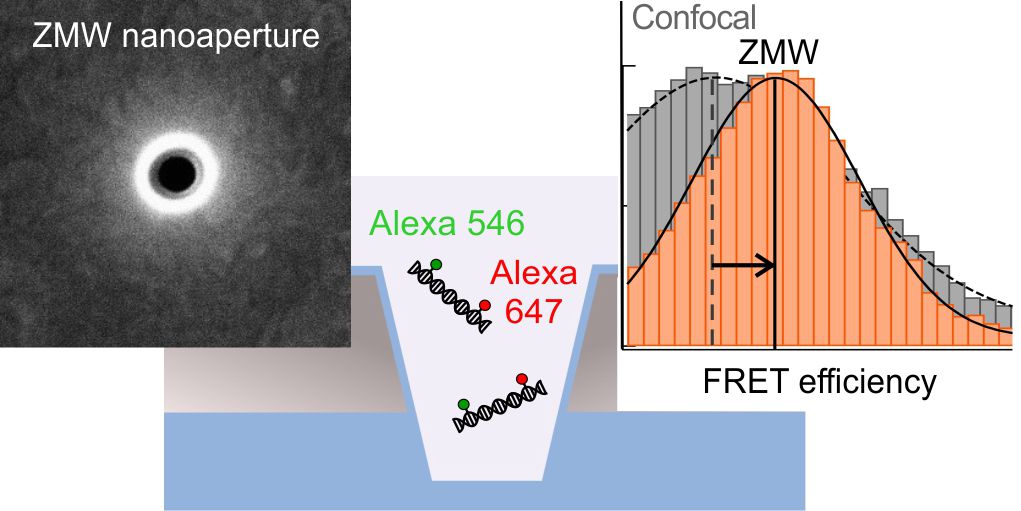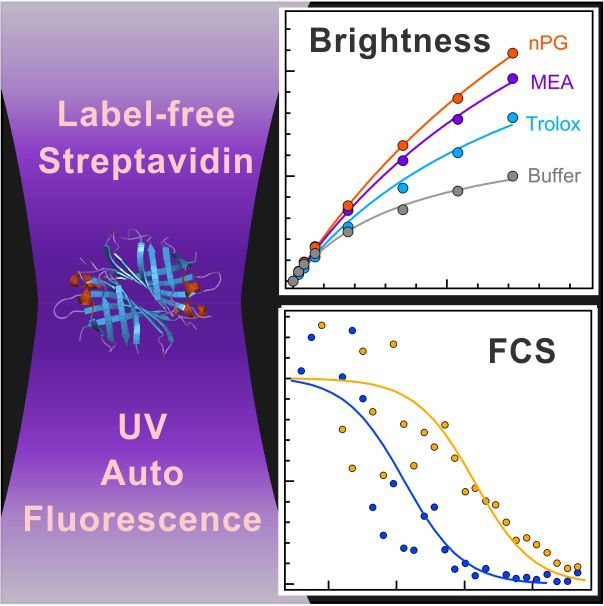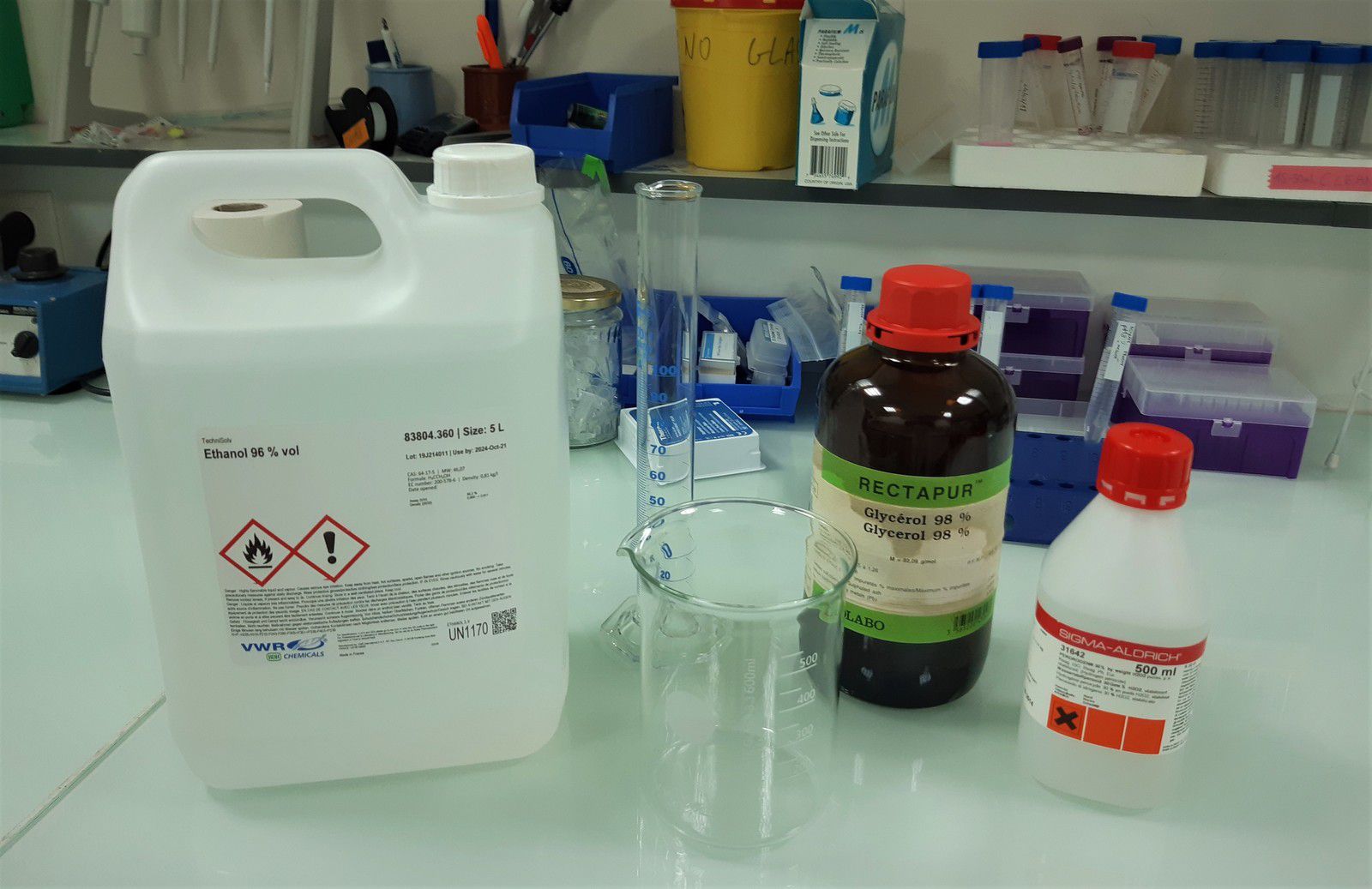Long-Range Single-Molecule Förster Resonance Energy Transfer between Alexa Dyes in Zero-Mode Waveguides
Förster resonance energy transfer (FRET) is widely used as a molecular ruler to monitor biomolecular conformations and interactions dynamics, but FRET is generally limited to distances below 10 nm.
Last year, we showed that zero-mode waveguides (ZMW) nanoapertures can enable single molecule FRET detection at spatial distances exceeding 10 nm with higher FRET efficiencies. However, this earlier work was limited to a specific Atto 550 – Atto 647N fluorescent dye pair, rising the issue that observations of FRET enhancement could be an artefact related to this specific set of fluorescent dyes.
In a recent ACS Omega paper, we use a markedly different set of fluorescent dyes (Alexa Fluor 546 and Alexa Fluor 647). Our new single molecule FRET data quantitatively demonstrate enhanced FRET efficiencies at large separations exceeding 10 nm confirming our earlier conclusions.
Significance:
- The FRET enhancement inside a ZMW does not depend on the set of fluorescent dyes, validating the ZMW approach.
- Nanoapertures and nanophotonics are demonstrated to extend the spatial range of FRET to distances where dipole-dipole interactions would otherwise be too weak to produce detectable FRET signals.
Also available on ArXiv 2004.04513

Ultraviolet Photostability Improvement for Autofluorescence Correlation Spectroscopy on Label-Free Proteins
The natural autofluorescence of proteins in the UV is appealing to get the detailed information from single molecule data without requiring a potentially disturbing external fluorescent label. However, proteins feature significantly lower autofluorescence brightness and photostabilities than conventional fluorescent dyes. This issue has largely prevented so far the detection of label-free proteins in the ultraviolet.
In a recent article in the Journal of Physical Chemistry Letters, we use a dedicated combination of oxygen scavengers and reducing agents to promote the protein photostability, reduce the photobleaching probability and improve the net UV autofluorescence signal.
Significance:
- This is the first time that different photostability improvement strategies are reported and quantitatively assessed for label-free proteins in the ultraviolet range.
- We show that the underlying photochemical concepts initially derived for organic fluorescent dyes are still valid for protein autofluorescence in the UV, and therefore appear to be quite general.
- Fluorescence correlation spectroscopy (FCS) is demonstrated on label-free streptavidin proteins containing only 24 tryptophan residues, 6.5× less than the current state-of-the-art.
Also freely available on ArXiv 2002.09761

Surface passivation of zero-mode waveguide nanostructures: benchmarking protocols and fluorescent labels
Zero-mode waveguide nanoapertures receive a large interest owing to their ability to confine light at the nanoscale and improve the detection of single fluorescent molecules. However, unwanted adhesion of the targeted molecules onto the metal surface can be a major issue.
In a recent article published in Scientific Reports, we highlight the role of the fluorescent dye in the surface adsorption phenomenon and we quantify the efficiency of different passivation approaches.
Significance:
- Despite its small size, we show that the fluorescent dye plays a key role in mediating the DNA molecule adsorption to the surface, with the dye’s surface charge and hydrophobicity being determining factors.
- We benchmark different surface passivation approaches and determine the most efficient approach to suppress nonspecific adhesion.

[ArmadaCrew] Emergency evacuation order
[Arcadia - Queen Emeraldas Revenge - Shadow Princess - Ebbesen's blade crew member]
Immediate evacuation order by emergency exits. This is not an exercise. Retreat with calm and discipline.
----
Gentlemen, it's been an honour and a privilege to be your captain over these years. Good luck to all of you.
[End of transmission]

... and remember I expect your results and reports twice a week. There are things bigger and nastier than a virus that still exist...
No virus will stop the ERC
Organic chemistry is gaining an increasing interest in the optics lab these days. According to WHO, here is a simple hanrub sanitizer recipe:
For a 1L solution, mix 833mL ethanol 96%, 4.2mL hydrogen peroxide 30%, 1.5mL glycerol and 161mL pure water. Shake well, avoid eye contact and do not even think of drinking it.

Even viruses have nightmares. So wash your hands and get results before he finds you...![]()




